Wednesday, 8:00am
1 October 2014
Books received #10
Make Your Own Luck, Grafica Della Strada, classic Volkswagen ads, Kazimir Malevich, Ark and Ends Meet, Essays on Exchange
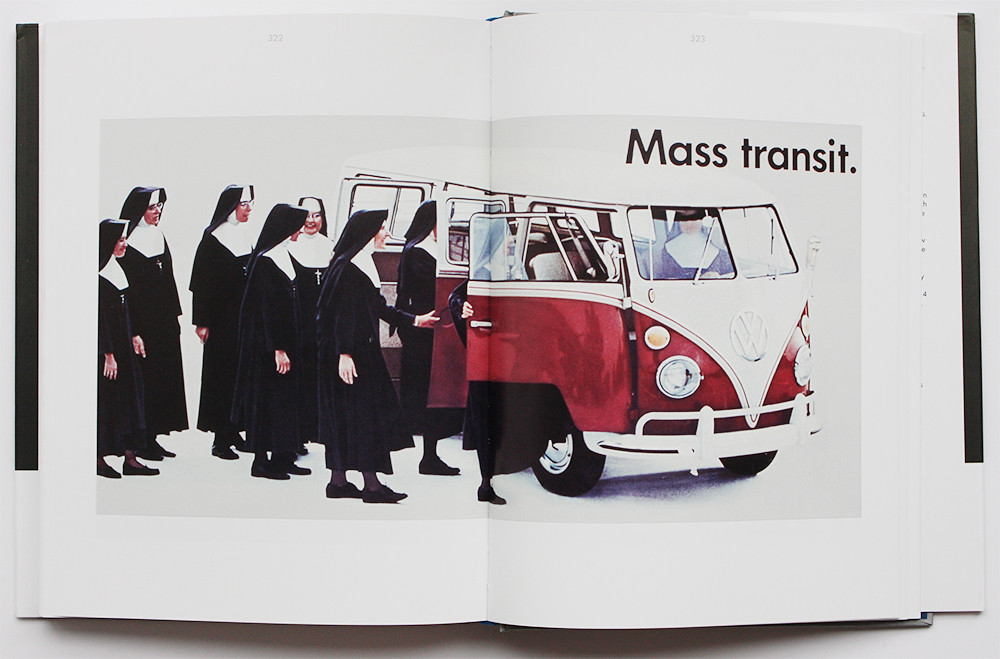
Here are a few books that have come into Eye’s Shoreditch office that caught our attention.
Kate Moross’s Make Your Own Luck: A DIY Attitude to Graphic Design & Illustration (Prestel, £22.50, $34.95) is a brightly coloured book of inspiration and advice for young art and design students. The book plots her path from making fanzines and listening to Riot Grrrl to her current career with Studio Moross. Neville Brody wrote the foreword and notes Moross’s ‘brilliant, creative, fun and unique’ body of work for clients such as Simian Mobile Disco, the New York Times, Vice and Adidas, to name a few. Moross wrote about her record label Isomorph in ‘Every shop is a gallery’ in Eye 76, the music design special issue.
Spread showing Moross’s typographic commission for Wired, 2013.
Top: Billboard for Volkwagen designed by art director Si Lam of DBB. His design follows the tone of Krone, Koenig and Levenson’s print advertisements and led to further dealer posters.

Kate Moross, Make Your Own Luck: A DIY Attitude to Graphic Design & Ilustration. Cover concept and art direction: Praline and Kate Moross.
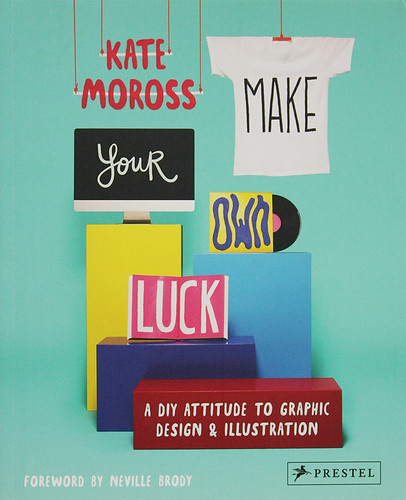
Graphica Della Strada: The Signs of Italy (Princeton University Press, £25, $40) is the most recent book by New York-based graphic designer Louise Fili (See Reputations: Louise Fili in Eye 87). Like previous titles, Fili shows her admiration for lettering and vernacular design and as a photo diary started in the 1970s, Graphica Della Strada shows the visual effect these trips to Italy have had on Fili’s typographic work. The signs are organised into five sections – classico, tradizionale, eclettico, La Spiaggia, fantasma and il pittore – each of which shows the ‘typographic legacy’ and ‘cultural heritage’ wrapped-up in the culture of street signs.
Louise Fili’s photographs of shop signs for Labor.rio Oreficeria, Carrara (left) and Fior di Salute (right) located on Via San Vitale 28, Bologna, Italy.

Sign for Ditta P. Galliani located at Via Roma 23, Lucca, Italy.
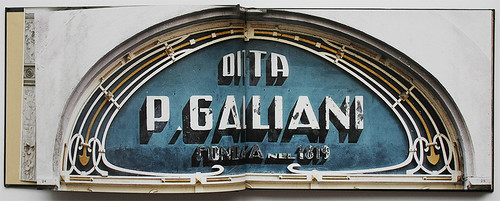
Louise Fili, Grafica Della Strada: The Signs of Italy.

As you might expect, “Remember those great Volkswagen ads?” by David Abbott, Alfredo Marcantonio and John O’Driscoll (Merrell, £39.95, $65.00) records the advertising history of car manufacturer Volkswagen: ‘To let the Beetle and its advertising pass on without a permanent record seemed a crying shame … This book is the story of the car and its advertising. In a unique way the two were indivisible.’ The advertising story begins with advertising agency Doyle Dane Bernbach and the pairing of copywriter Julian Koenig and art director Helmut Krone. Familiar ads are mixed with the less well known – all are nostalgic reminder of a long-gone ‘golden age’ of advertising.
‘Will we ever kill the bug?’, 1965 (left) and ‘Don’t let the low price scare you.’ (1966), ‘Do you earn too much to afford one?’ (1966), ‘Any change will be an improvement.’ (1965) and ‘Which came first?’ (1966), all on the right hand page.

David Abbott, Alfredo Marcantonio and John O’Driscoll, “Remember those great Volkswagen ads?”. Cover photo by Max Forsythe.

Kazimir Malevich: The Climax of Disclosure by Rainer Crone and David Moos (Reaktion Books, £17.95) was released just days before the Tate Modern’s Malevich exhibition which opened in mid-July (‘Malevich: Revolutionary of Modern Art’ continues until 26 October 2014) and gives an in-depth, largely text-based, look at the avant-garde artist. Moos and Crone take on a philosophical tone, approaching Malevich’s work in tandem with their own journey ‘to unravel enlightenment’ and ‘let go of the familiar’ in favour of embracing ‘the unexplored’.
Rainer Crone and David Moos, Kazimir Malevich: The Climax of Disclosure. Cover image: Kazimir Malevich, Suprematism, 1915.

Ark: Words and Images from the Royal College of Art Magazine 1950-1978 (£15) is written, edited and published by graduating students from the Critical Writing in Art & Design (CWAD) MA course at the Royal College of Art in London. The first of the two books bound into a single cover features Jay McCauley Bowstead’s essay ‘ARK magazine from Cover to Cover’, which is followed by images of all 54 Ark covers. The second book features original written and visual material from Ark, is introduced by the students who selected them from the RCA archive. Design: Jörg Schwertfeger.
Critical Writing in Art & Design, Royal College of Art, Ark: Words and Images from the Royal College of Art Magazine 1950-1978. Book design: Jörg Schwertfeger. Illustration (left) featured in an article ‘Gold pan alley’ in Ark 19, 1957, designer unknown.

Ark 32, Summer 1962, themed ‘The Crowd’, art edited by Brian Haynes, Sashi Rawal and John Hutchinson (left) and Ark 33, Autumn 1962, themed ‘Young People’ with cover design by Keith Branscombe (right).

Cover: Keith Branscombe’s photographs of a party on a boat travelling from Gravesend to Calais in Ark 33, 1962.
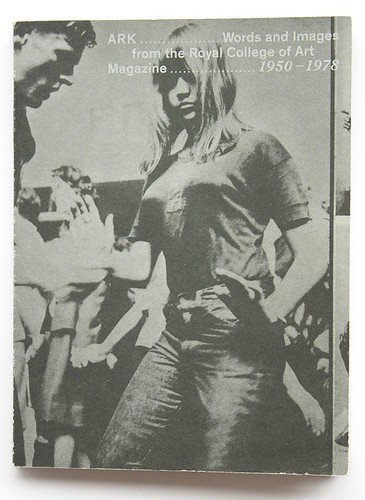
Another book from CWAD graduates is Ends Meet: Essays on Exchange (£12) which has a heat-sensitive cover designed to ‘resemble a warped financial document’. Contained within are eighteen essays by students on the theme of ‘exchange’, with articles about tollgates, hecklers and cold-calling. The student texts are complemented by ‘guest voices’ Ann Pettifor, Susanne Kuechler, Neil Cummings, Nina Power and Katarina Palmer. The handsome publication, which boasts a back cover (by Susanna Davies-Crook) whose colour changes with temperature, was designed by Jonah Berthod and Andrew Brash and printed on a variety of paper stocks by Lecturis in Eindhoven, Holland.
Ends Meet: Essays on Exchange designed by Jonah Berthod and Andrew Brash.
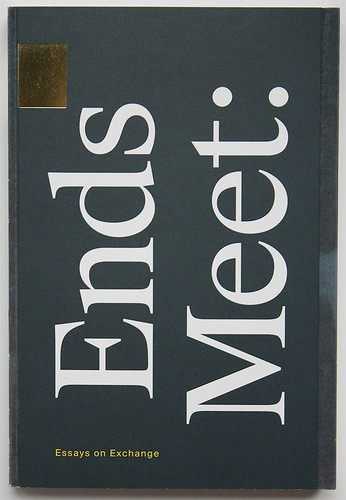
Eye is the world’s most beautiful and collectable graphic design journal, published quarterly for professional designers, students and anyone interested in critical, informed writing about graphic design and visual culture. It is available from all good design bookshops and online at the Eye shop, where you can buy subscriptions and single issues.
